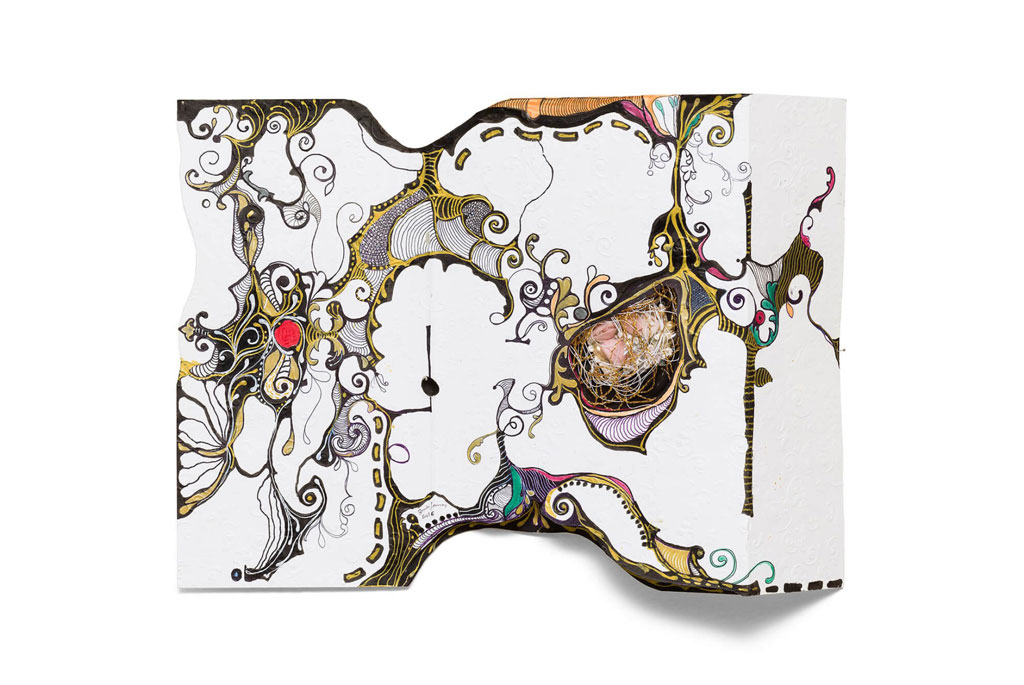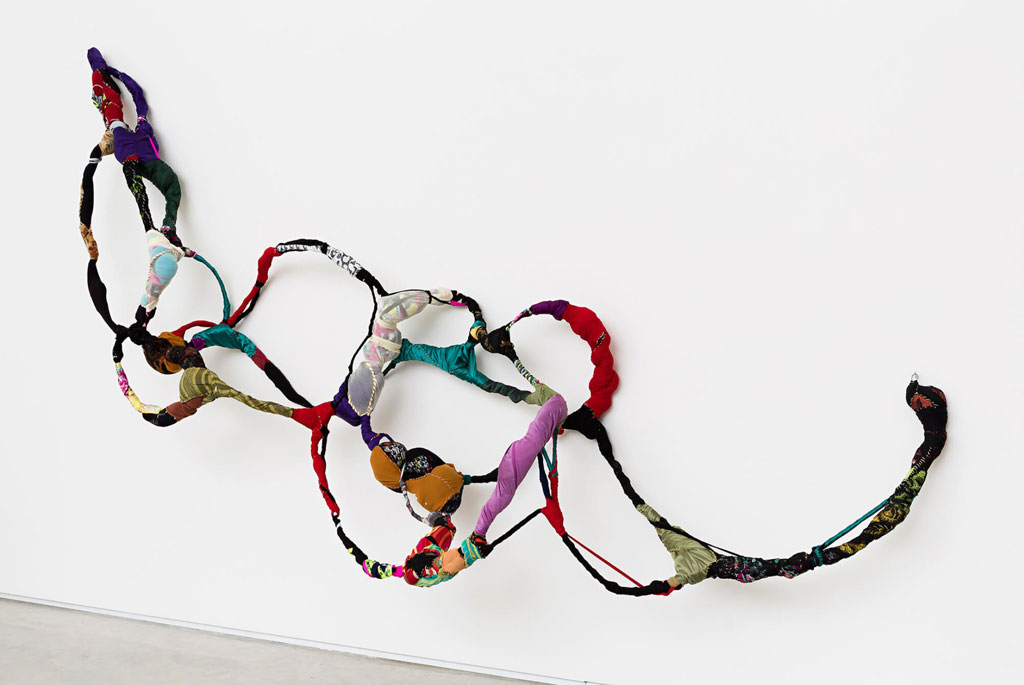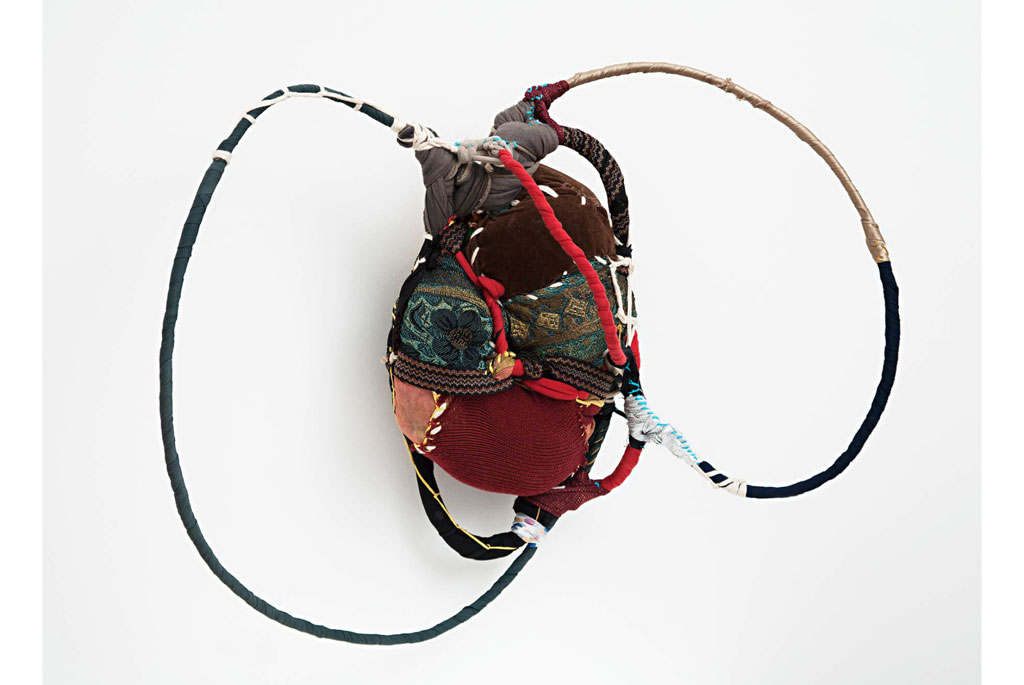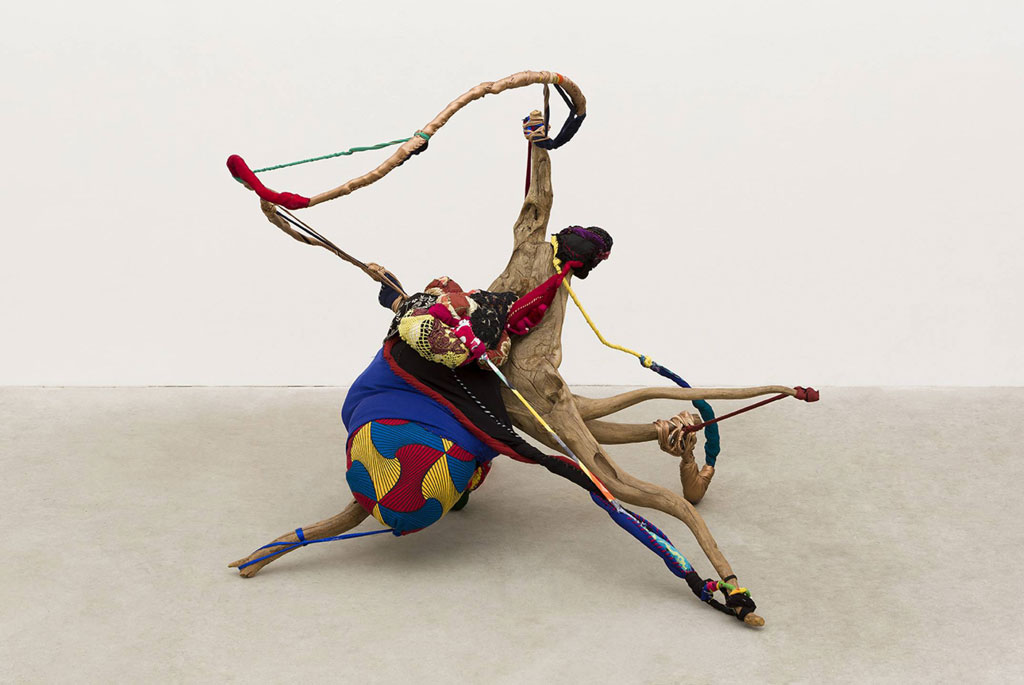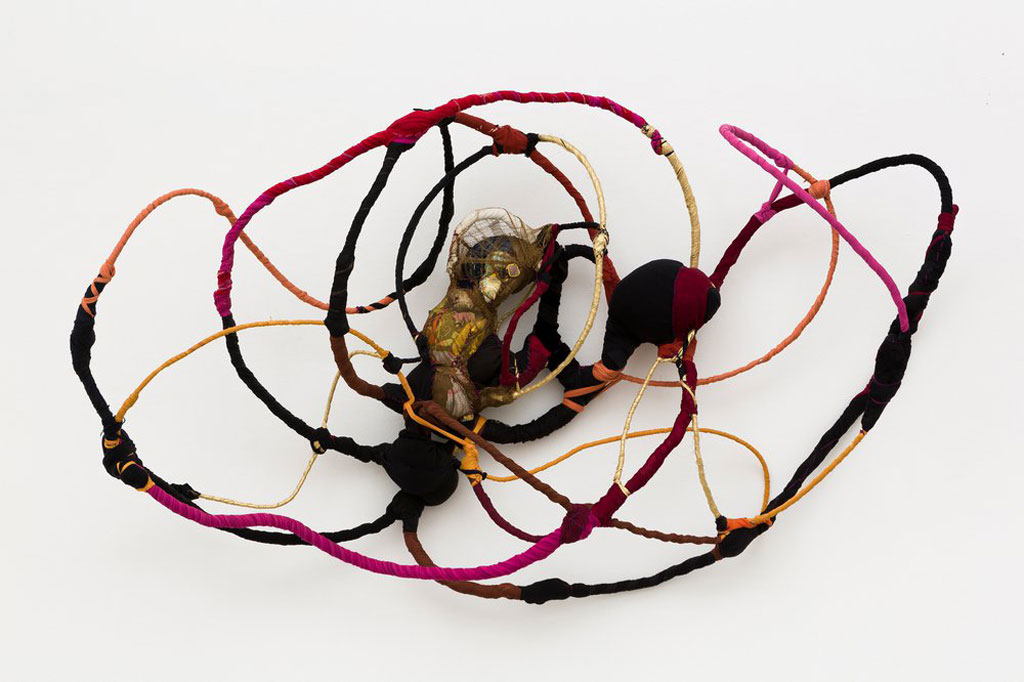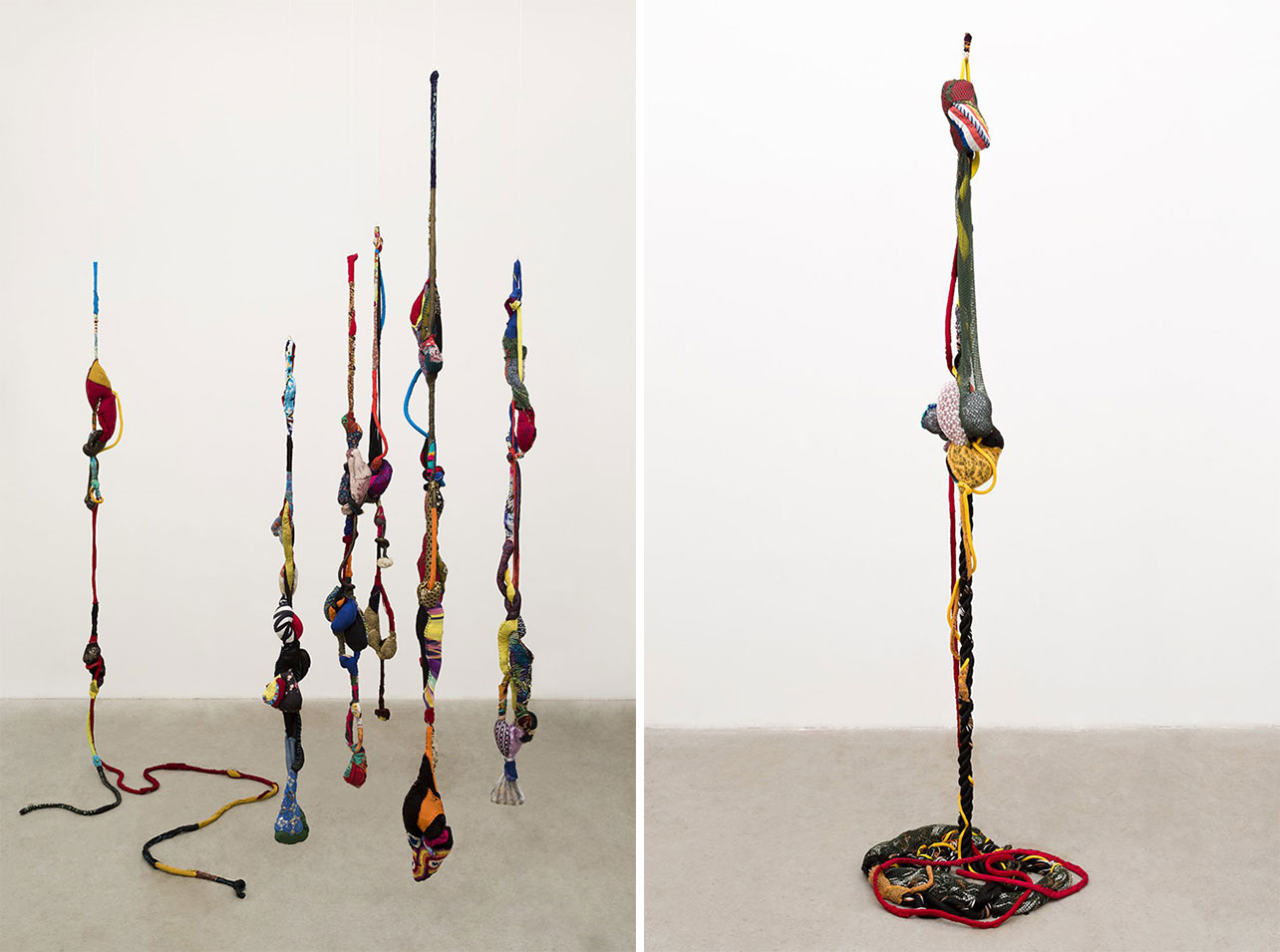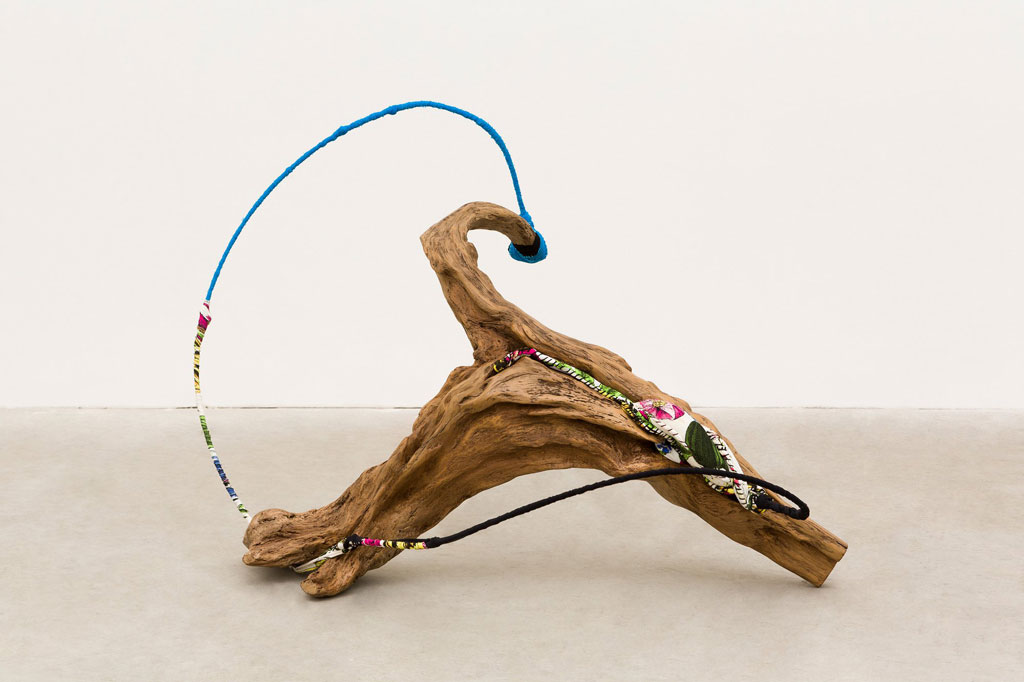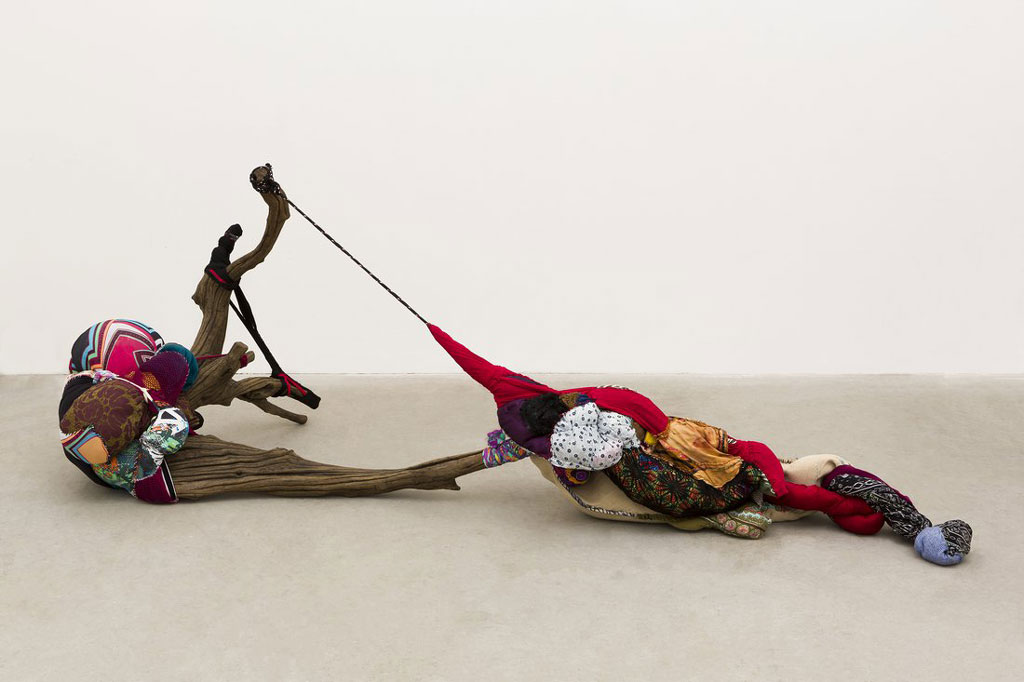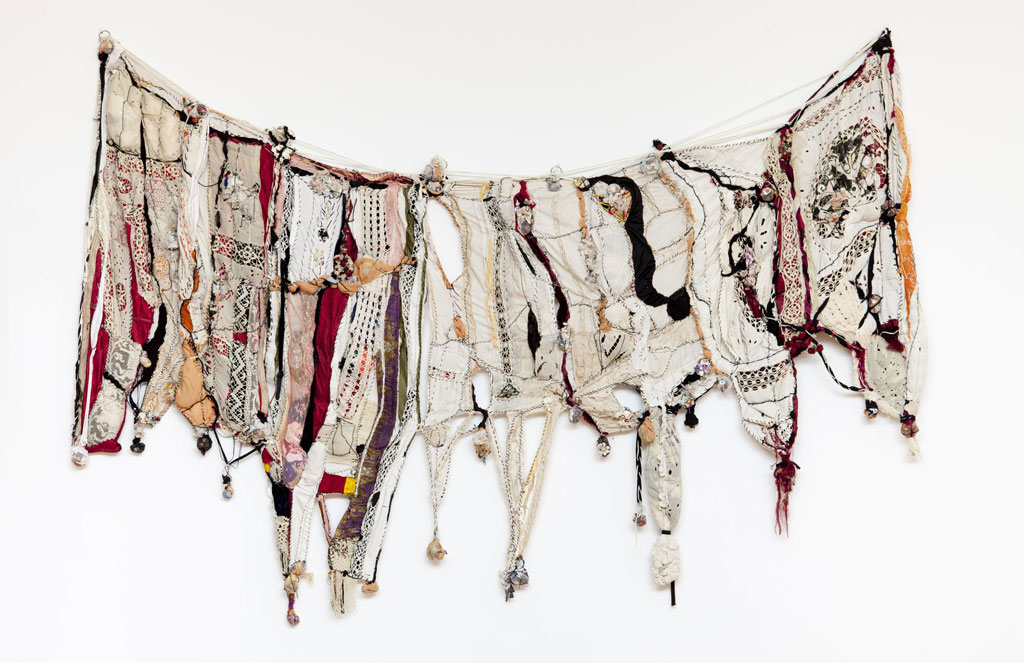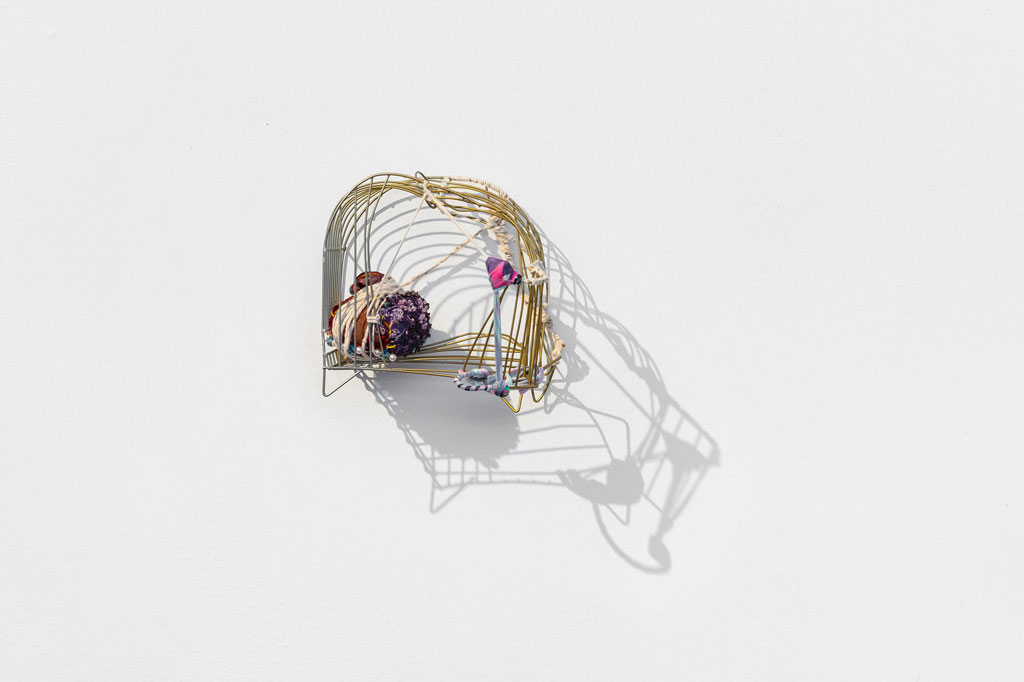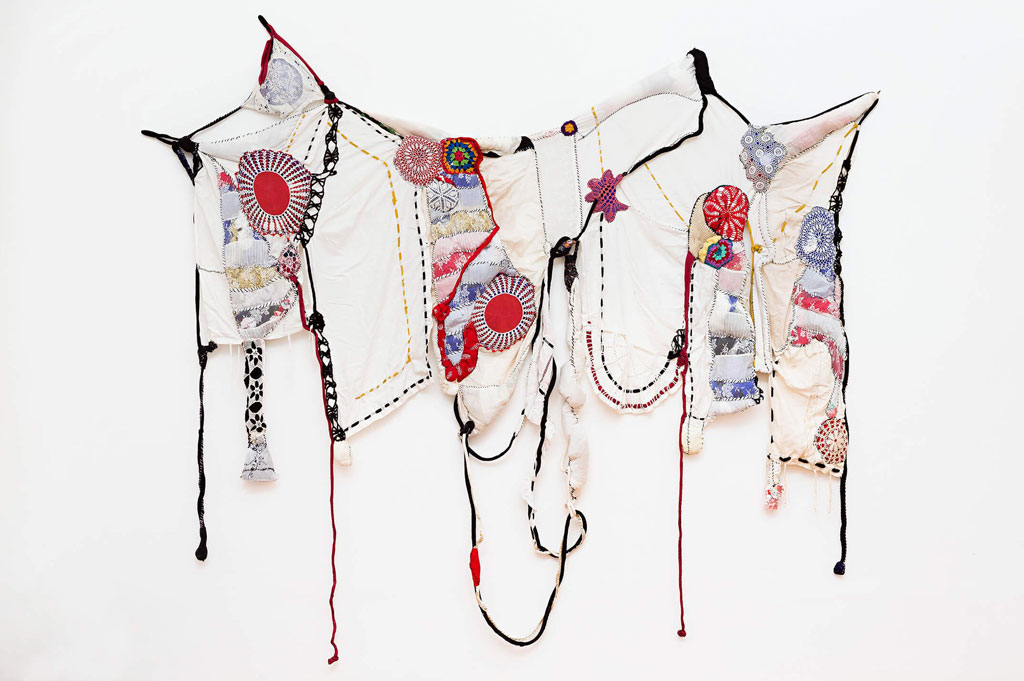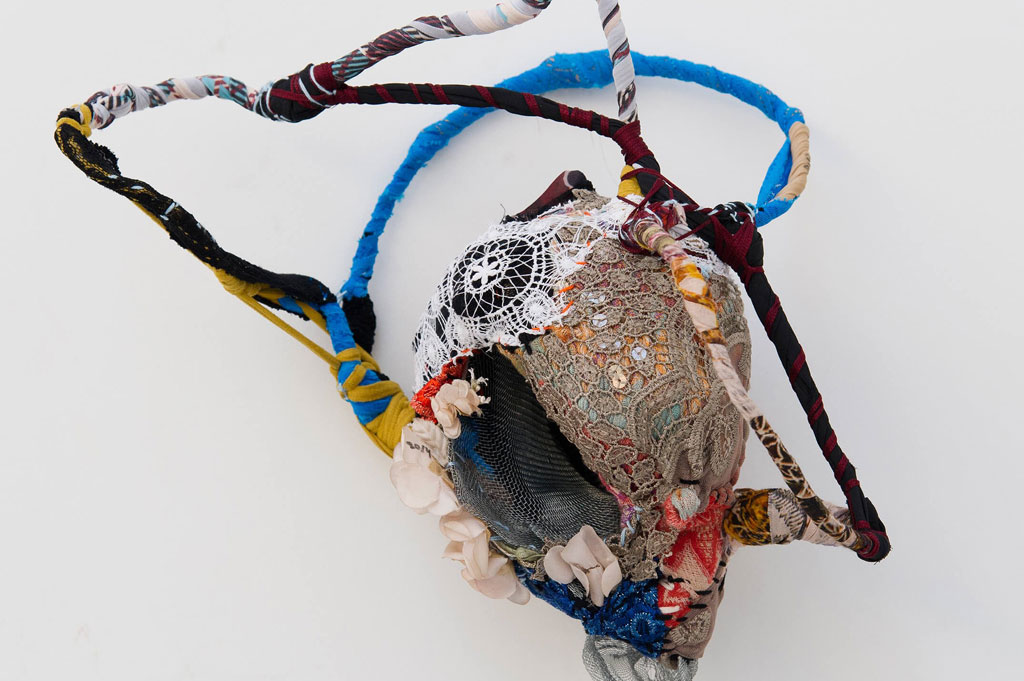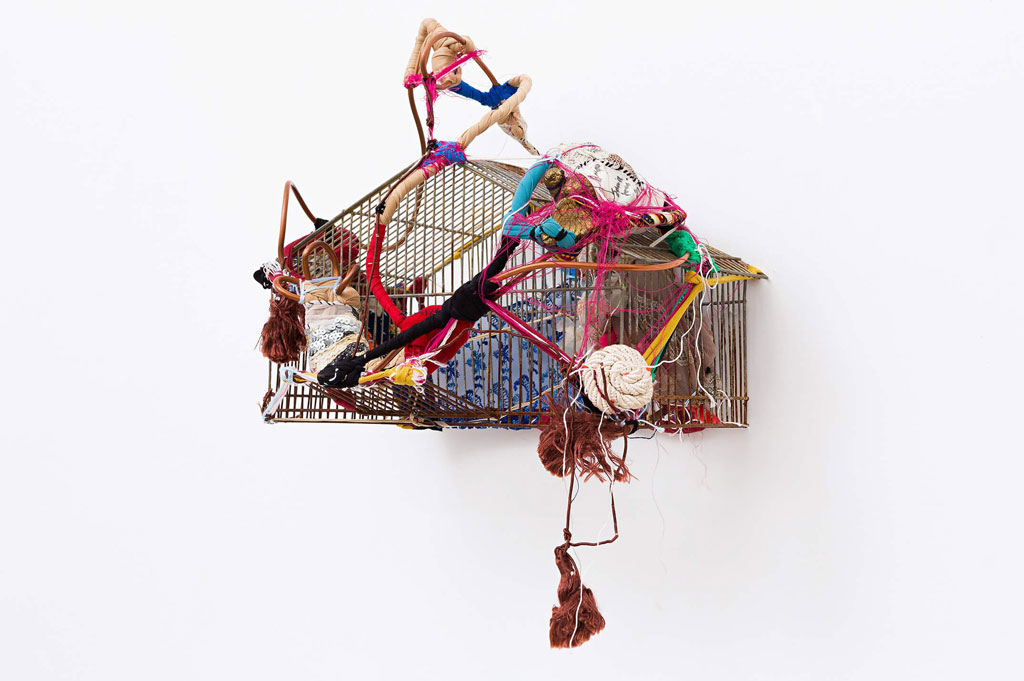ART-TRIBUTE:Weaving and other Practices… Sonia Gomes
 We continue our Tribute with the Brazilian artist Sonia Gomes (1948- ), she combines secondhand textiles with everyday materials, such as furniture, driftwood, and wire, to create abstract sculptures that reclaim Afro-Brazilian traditions and feminized crafts from the margins of history. “My work is black, it is feminine, and it is marginal. I am a rebel,” affirms Gomes, adding, “I never worried about masking or stifling anything that might or might not fit standards of what is called art.”
We continue our Tribute with the Brazilian artist Sonia Gomes (1948- ), she combines secondhand textiles with everyday materials, such as furniture, driftwood, and wire, to create abstract sculptures that reclaim Afro-Brazilian traditions and feminized crafts from the margins of history. “My work is black, it is feminine, and it is marginal. I am a rebel,” affirms Gomes, adding, “I never worried about masking or stifling anything that might or might not fit standards of what is called art.”
By Efi Michalarou
 Born in Caetanópolis, an once-important manufacturing center for textiles, in the state of Minas Gerais, to a black mother and white father, Sonia Gomes is also a fusion of recollections. Sonia brought the strong influence of her maternal grandmother, a midwife, blessing woman and wearer of head cloth rolls, used to carry water cans on the head. From her white father’s family, Sonia inherited the rumination of kept objects, photographs, fabric patches which would come from factories, fragmented affections. In Caetanópolis she was a primary teatcher at 16 years until 26 years. She lives and works at Belo Horizonte, Minas Gerais, Brazil. Sonia Gomes gratuated in Advocacy by Faculdade de Sete Lagoas – Minas Gerais, Brazil. Gomes started her career as an artist at age of 45 years old, since then she participated at diverses group exhibitions. Sonia Gomes’ work binds together cultural movements and traditions that are intrinsically linked to the affirmation of memory, identity and the transformative power of creation in situations of vulnerability and invisibility. Through the use of fabric, thread, found and gifted objects, her multi-dimensional, sometimes biomorphic sculptures and structures stand as insistent placeholders for the absent or unseen body. These gestural inquiries refer to the body itself, as a way to decolonize the past and reclaim the present to reconstitute and celebrate both the self and her black heritage. Her compositions stem from a spontaneous and casual practice of deconstructing and re-assembling everyday objects. Expressionist-like organic forms emerge, which invariably lead to the vision of a pulsating life, made from the combination of different experiences and memories. Gomes designs meticulous contortions with fabric, each seam or fold stemming from vernacular procedures aimed at transcending the notion of the popular, combining the naive (as a result of an informal and self-taught background) and the erudite (in line with a rigorous gaze and gesture). Within the entanglement of memories and intuitive materializations, biographies find escape routes in a tactile and organic way, experimenting with new and vibrant ways of existing. Gomes first gained international recognition when the late curator Okwui Enwezor included her work in the 2015 Venice Biennale. Largely self-taught, she is now widely celebrated for her work and has become a barrier-breaking figure as the first living Afro-Brazilian woman artist to have a monographic show at the São Paulo Museum of Art (MASP), in 2018. Over the years Sonia Gomes has developed her artistic language to reveal the stories, the hidden meanings, and the social significance of the fabrics that she uses. To her, this language conjures the ultimate freedom—the freedom to engage in the destruction and reconstruction of objects and fabrics. This creative process has manifested a new series of sixteen works (2020), made with stones and destroyed birdcages. Sculptures from this series begin with a broken birdcage and wrapped fabric, with a pendant stone that hangs in each cage—a stark counter-image to the delicacy of the imprisoned bird. These poetic crossings are the guiding threads that take us through the work of an artist whose persistent quest has been to emancipate her art from any formal rule or regulation. Her compositions stem from a spontaneous and casual practice of deconstructing and re-assembling everyday objects.
Born in Caetanópolis, an once-important manufacturing center for textiles, in the state of Minas Gerais, to a black mother and white father, Sonia Gomes is also a fusion of recollections. Sonia brought the strong influence of her maternal grandmother, a midwife, blessing woman and wearer of head cloth rolls, used to carry water cans on the head. From her white father’s family, Sonia inherited the rumination of kept objects, photographs, fabric patches which would come from factories, fragmented affections. In Caetanópolis she was a primary teatcher at 16 years until 26 years. She lives and works at Belo Horizonte, Minas Gerais, Brazil. Sonia Gomes gratuated in Advocacy by Faculdade de Sete Lagoas – Minas Gerais, Brazil. Gomes started her career as an artist at age of 45 years old, since then she participated at diverses group exhibitions. Sonia Gomes’ work binds together cultural movements and traditions that are intrinsically linked to the affirmation of memory, identity and the transformative power of creation in situations of vulnerability and invisibility. Through the use of fabric, thread, found and gifted objects, her multi-dimensional, sometimes biomorphic sculptures and structures stand as insistent placeholders for the absent or unseen body. These gestural inquiries refer to the body itself, as a way to decolonize the past and reclaim the present to reconstitute and celebrate both the self and her black heritage. Her compositions stem from a spontaneous and casual practice of deconstructing and re-assembling everyday objects. Expressionist-like organic forms emerge, which invariably lead to the vision of a pulsating life, made from the combination of different experiences and memories. Gomes designs meticulous contortions with fabric, each seam or fold stemming from vernacular procedures aimed at transcending the notion of the popular, combining the naive (as a result of an informal and self-taught background) and the erudite (in line with a rigorous gaze and gesture). Within the entanglement of memories and intuitive materializations, biographies find escape routes in a tactile and organic way, experimenting with new and vibrant ways of existing. Gomes first gained international recognition when the late curator Okwui Enwezor included her work in the 2015 Venice Biennale. Largely self-taught, she is now widely celebrated for her work and has become a barrier-breaking figure as the first living Afro-Brazilian woman artist to have a monographic show at the São Paulo Museum of Art (MASP), in 2018. Over the years Sonia Gomes has developed her artistic language to reveal the stories, the hidden meanings, and the social significance of the fabrics that she uses. To her, this language conjures the ultimate freedom—the freedom to engage in the destruction and reconstruction of objects and fabrics. This creative process has manifested a new series of sixteen works (2020), made with stones and destroyed birdcages. Sculptures from this series begin with a broken birdcage and wrapped fabric, with a pendant stone that hangs in each cage—a stark counter-image to the delicacy of the imprisoned bird. These poetic crossings are the guiding threads that take us through the work of an artist whose persistent quest has been to emancipate her art from any formal rule or regulation. Her compositions stem from a spontaneous and casual practice of deconstructing and re-assembling everyday objects.